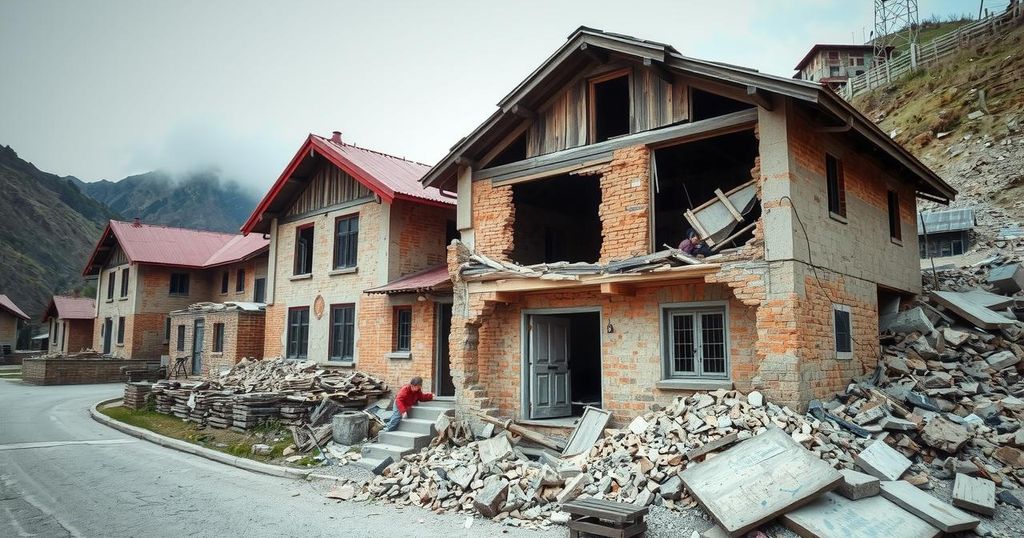A 6.8 magnitude earthquake struck Dingri, Tibet, on January 7, causing severe destruction, killing at least 126 individuals, and leaving 188 injured. Rescue efforts are challenged by extreme weather as many homes collapsed. President Xi Jinping has called for urgent measures to assist the victims and minimize fatalities.
On January 7, at 9 am local time, Dingri, a rural county in southern Tibet, experienced a devastating earthquake measuring 6.8 on the magnitude scale according to China’s national earthquake agency, though the U.S. Geological Survey reported it as 7.1. The powerful tremor resulted in severe destruction, with reports indicating that 80-90% of houses in the most affected villages collapsed. The official death toll has reached at least 126, with 188 injuries noted, impacting around 6,900 residents within a 20-kilometer radius of the quake’s epicenter.
Following the disaster, rescue operations commenced immediately, involving thousands of emergency workers and soldiers rigorously searching through the rubble to locate survivors. However, the frigid conditions, with daytime temperatures plummeting to -8ºC and nighttime lows of -18ºC, render the likelihood of finding any survivors increasingly grim. The region, situated at an altitude of 4,200 meters near Mount Everest, compounded the challenges faced by rescue crews as several aftershocks rattled the area shortly after the initial quake.
Visual reports from national broadcasts and social media depicted the extent of the destruction, illustrating the small white houses typical of rural China reduced to mere heaps of bricks and stones. Amidst the chaos, rescuers clad in orange uniforms made attempts to recover bodies and tended to the cries of distraught residents mourning the loss of their homes and livestock. In response to the crisis, President Xi Jinping urged for all possible measures to be taken to facilitate search and rescue efforts and to assist the injured, emphasizing the importance of minimizing loss of life and relocating those adversely affected by the earthquake.
The earthquake in Dingri, Tibet, reflects the geological volatility of the region, which is located in the seismically active Himalayan area. Earthquakes of this magnitude pose significant risks to life and infrastructure, particularly in rural locales where building standards may not withstand such forces. The incident highlights the vulnerable position of populations living in high-altitude areas affected by extreme weather conditions, which complicate rescue and recovery operations.
The tragic earthquake in southern Tibet has inflicted substantial loss of life and property, with rescue efforts hindered by harsh environmental conditions. With significant portions of villages reporting near-total destruction, the challenge ahead involves not only immediate rescue efforts but also long-term recovery for the affected communities. The response from national leadership underscores the urgency and seriousness of the situation as the nation rallies to aid its citizens during this devastating crisis.
Original Source: www.lemonde.fr






